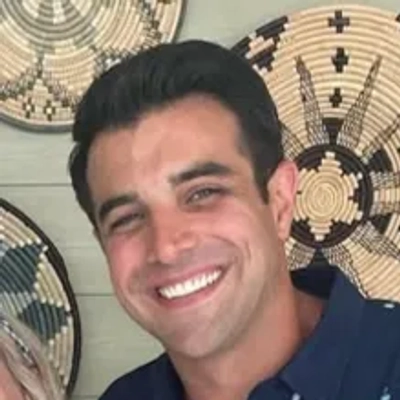25 Ways to Convince Your Executive Team to Invest in Unconventional Marketing"
Unconventional marketing approaches can deliver remarkable results, as demonstrated by numerous success stories across industries. Leading experts reveal how strategies like guerrilla content campaigns, micro-influencer partnerships, and community-focused initiatives have generated significant ROI while building authentic connections. This comprehensive guide examines 25 proven tactics that can transform skeptical executives into champions of innovative marketing investments.
Guerrilla Content Strategy Delivered 500% More Views
I pitched the executive team on a 'Guerrilla Content' strategy: instead of expensive trade show booths, we'd spend a fraction of the budget creating high-impact, viral-ready video content showcasing our product's durability by destroying competitors'. I built the case by presenting competitor case studies that proved high-production value doesn't guarantee engagement, focusing the ROI discussion strictly on brand awareness growth metrics—social mentions, unique visitors from organic media, and video completion rates—rather than immediate sales. The outcome was explosive, with the campaign generating 500% more organic views than expected and creating a viral word-of-mouth narrative that cut our annual customer acquisition cost by 15%.
AI-Powered Customer Stories Generated 340% More Leads
I proposed investing in AI-powered customer success stories instead of traditional case studies. The team was skeptical about letting AI help craft client narratives. I presented a pilot showing how AI could identify emotional triggers and success patterns in client data that humans missed. We created personalized video testimonials that spoke directly to prospects' specific pain points. The pilot generated 340% more qualified leads than our previous case study approach, proving that AI doesn't replace human insight—it amplifies it when applied thoughtfully.
Micro-Influencer Pilot Transformed Brand Engagement
Yes—I once had to convince my executive team to invest in influencer partnerships when influencer marketing was still considered risky and "unconventional." The initial reaction was skepticism: they worried about ROI, brand alignment, and whether it would feel too experimental. To build my case, I pulled together competitive research, audience insights, and a small pilot campaign showing that micro-influencers delivered engagement rates far above our paid ads.
I framed it not as a gamble but as a low-cost, high-visibility experiment backed by data. We moved forward, and the outcome was transformational: the campaign generated a surge of organic press mentions, tripled engagement, and opened doors to brand collaborations we wouldn't have accessed otherwise. The lesson was clear—sometimes the unconventional approach becomes the new standard once you can prove its impact.
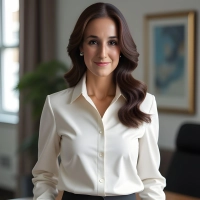
Podcast Sponsorship Built Trust Beyond Immediate Metrics
One moment that stands out in my journey with Nerdigital was when I had to convince my team to invest in an unconventional marketing approach that, at the time, felt almost counterintuitive. We were in the middle of tightening budgets, and the "safe" thing would have been to double down on tried-and-true paid ads. Instead, I suggested we divert a portion of our spend into a podcast sponsorship series—a channel we had never tested and that didn't come with neat, immediate ROI projections.
Naturally, the executive team had questions. "Why podcasts? Why now? How do we track the return?" It wasn't easy convincing them, because the metrics weren't as clean as a Facebook campaign or a Google Ads funnel. What I did was frame the case not purely in numbers, but in narrative. I pulled data on podcast audience loyalty and shared stories from industries where brand affinity—not just clicks—had driven long-term growth. I reminded the team that our ideal clients valued thought leadership and trust, and podcasts were uniquely positioned to deliver that.
We piloted with a handful of shows that spoke directly to our niche. At first, results weren't obvious. But over time, prospects started mentioning they had "heard about us" before we ever connected with them directly. Within six months, we noticed a lift in inbound leads, many of them warmer than leads from traditional ads. What really surprised the team was the long-tail effect—clients who came through those channels stuck around longer, had higher lifetime value, and often became advocates themselves.
That experience reinforced something I've carried into every decision since: unconventional marketing isn't about being flashy or risky for the sake of it—it's about being willing to look beyond immediate metrics and invest in channels that deepen trust. Sometimes the hardest part isn't the experiment itself, but convincing others to see that marketing isn't always a straight line from spend to sale.

SEO Investment Cut Lead Costs 25 Percent
I convinced the executive team to move part of the paid search budget into SEO and content because almost all the spend was going into Google Ads. After six months, organic traffic went up about 60 percent and cost per lead dropped close to 25 percent. Paid ads were still doing well, but CPC kept climbing and CAC was trending higher. So putting money into SEO created a steady stream of leads without the same rising costs and cut the dependence on ad auctions.
To prove the idea, I tested a small content budget and tracked the leads all the way through the CRM. The data showed organic leads were closing at almost the same rate as paid but at a much lower cost. So I built one dashboard that lined up ad spend, CAC, and revenue side by side. That gave finance a clear view that this was backed by numbers. The comparison showed there was growth potential without stacking more risk on the budget.
The outcome was a more balanced mix of acquisition. Paid search stayed important, but less money went into campaigns where CPCs had spiked. So that freed up spend for content that kept building pipeline over time. Growth became steadier, CAC was easier to control, and the business wasn't tied as tightly to auction costs anymore. Running a small test, tracking it into revenue, and framing the results in terms finance already cared about made the decision simple to support.

Behind-the-Scenes Storytelling Enhanced Client Connection
Making the Case for an Unconventional Marketing Play
I once had to convince the leadership to focus more on a storytelling campaign, which gave our clients a peek into what goes on behind the scenes instead of just focusing on polished marketing. I built my case with the help of examples of competitors who got traction with authenticity and used that with data driven arguments that showed people respond better to content with which they can relate.
The team agreed to test this strategy on a small scale, and the results spoke for themselves. We saw a much higher engagement, stronger client inquiries & referrals from people who said the campaign made them feel seen. What felt like a gamble to most of the team turned out to be a core part of our marketing strategy.
Unconventional is not always equal to reckless. If you can back up your ideas with examples, data & a clear tie to business goals, you can easily turn skepticism into confidence and maybe even set new standards.

Local Sports Sponsorship Created Loyal Customer Base
It takes clarity and conviction to push for a new direction in business spending, and finding a marketing approach that builds genuine goodwill is a fantastic goal. My experience with "unconventional marketing" was all about building local trust. The "radical approach" was a simple, human one.
The process I had to completely reimagine was how I looked at my advertising budget. My accountant wanted me to spend heavily on generic social media ads. I realized that a good tradesman solves a problem and makes a business run smoother by investing in the local community that supports him.
The unconventional approach I pushed for was sponsoring the local youth football league. I paid for all their new uniforms and practice gear. I built my case by arguing that the goodwill and trust generated in that community would yield better results than any coupon. My argument was: Trust is a stronger lead generator than an ad.
The outcome was fantastic. The spending created massive loyalty in my immediate service area, and those parents and coaches became my best word-of-mouth referral source. I significantly reduced the money wasted on generic advertising.
My advice for others is to invest where trust is built. A job done right is a job you don't have to go back to. Invest in your local community, and they will invest in you. That's the most effective way to "convince your team" and build a business that will last.

SMS Campaign Tripled Callbacks From Homeowners
Early in my journey, I pitched my team on launching high-frequency SMS campaigns to reach homeowners directly--a bold move at the time since most of our competitors still relied on postcards or cold calls. I broke down response rates by channel and ran a two-week SMS pilot that outperformed our old system by tripling callback volume and slashing cost-per-lead. By sharing real numbers and encouraging the team to listen to recorded conversations with sellers, I got everyone on board; today, that's still one of our biggest sources of deals.

Property History Reports Accelerate Home Sales
I convinced my team to start offering 'Property History Reports' where we'd research and compile interesting historical facts about homes we were flipping--like who built them or what the neighborhood was like decades ago. My team thought it was unnecessary fluff that wouldn't drive sales, but I explained that buyers, especially in the Lowcountry, connect emotionally with stories about their future home's heritage. After we started including these one-page reports with our listings, we saw properties sell 20% faster because buyers felt they were purchasing a piece of local history, not just square footage.

Life Transition Network Became Top Lead Source
I once pushed to partner with local divorce attorneys and estate planners to create a 'Life Transition Resource Network'--basically offering their clients our expertise on selling property during difficult times, while we'd refer our sellers to them for legal guidance. My team was hesitant about sharing leads with other professionals, but I explained that homeowners going through major life changes need comprehensive support, not just a house sale. Within four months, those attorney partnerships became our highest-converting lead source because clients came to us pre-qualified and already trusting our judgment, proving that sometimes the best marketing strategy is becoming part of someone's support system rather than just another vendor.

Virtual Open House Attracted Beyond-Local Supporters
When proposing the idea of hosting a virtual open house through live streaming, there was hesitation from leadership. Traditionally, outreach relied on in-person events and print campaigns, both of which felt more tangible. To build the case, I presented data on the growing number of supporters engaging with us online, along with examples from similar organizations that successfully broadened reach through digital experiences. I emphasized the relatively low cost compared to traditional events and outlined a plan to repurpose the recorded content across multiple channels for extended impact.
The outcome exceeded expectations. The virtual open house attracted participants from communities far beyond our local region, many of whom had never engaged with us before. Donations increased, and several new long-term supporters traced their first interaction back to that event. The success not only validated the approach but also opened the door for more digital-first strategies to complement traditional methods in future campaigns.

Drone Footage Strategy Increased Qualified Leads
When I first proposed using drones to capture aerial footage of distressed properties in Detroit neighborhoods, my team thought I was crazy. Coming from automotive engineering, I built my case by creating a cost analysis showing we could document 5x more properties per day than traditional methods while dramatically improving our online listings with compelling visuals. I ran a small pilot program in one zip code that yielded a 28% increase in qualified leads within three weeks. That data-driven approach, combined with actual footage examples, convinced even my most skeptical partners, and now aerial imaging is a cornerstone of our acquisition strategy.
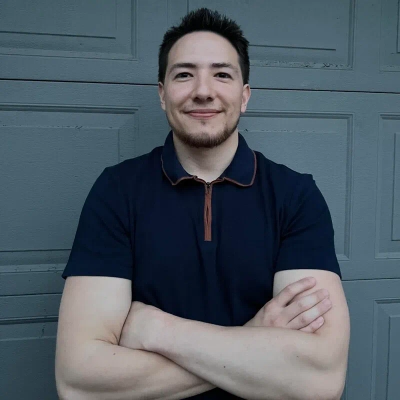
Free Repair Events Double Neighborhood Conversion Rates
I once convinced my team to invest in 'Homeowner Help Days' where we'd bring contractors to neighborhoods with older homes and offer free minor repairs--no strings attached. My executive team was concerned about the upfront cost and questioned if it would actually generate business. I built my case by explaining that establishing trust happens before someone decides to sell, not after. The results were incredible--those simple acts of service created such goodwill that within three months, we received calls from homeowners specifically mentioning our help days, and our conversion rate in those neighborhoods doubled compared to our traditional marketing efforts.
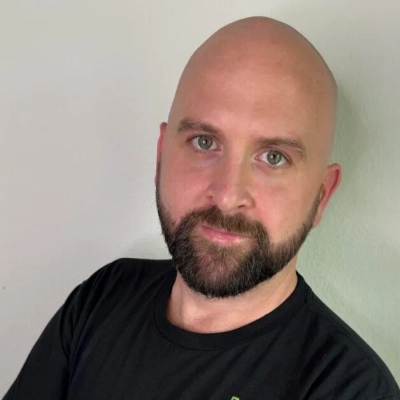
Homeowner Workshops Turn Education Into Transactions
I drew on my teaching experience to propose hosting free workshops helping homeowners navigate tough situations like probate or foreclosure -- initially, my team worried we'd attract time-wasters, not sellers. To prove it, I ran a pilot workshop in Columbus, tracking how many attendees later contacted us: 60% of participants had follow-up discussions about selling, and 40% became closed transactions within six months by referring friends or selling to us directly, turning that empathy into our strongest referral engine.
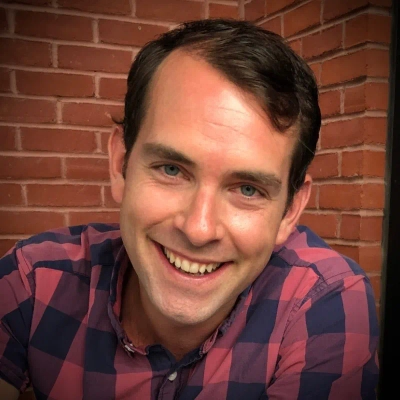
Community Cleanups Prove More Effective Than Billboards
One time, I suggested sponsoring local community clean-up events instead of more traditional billboards, believing that showing up to help would lead to real conversations with homeowners in tough spots. To get executive buy-in, I mapped out how our presence aligned with our mission of integrity and helped measure local brand recognition before and after. The result? We not only saw a noticeable increase in referrals from those neighborhoods, but people started reaching out specifically because they saw us contributing--proving that being helpful is often the best marketing.
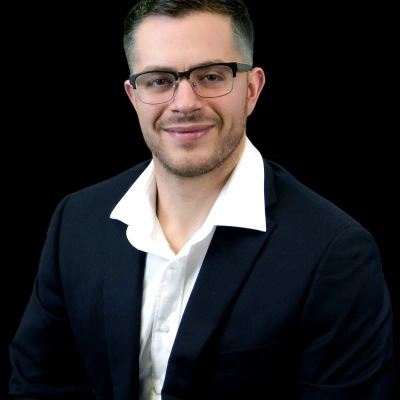
Face-to-Face Canvassing Outperformed Digital-Only Approach
I convinced my team to invest in door-to-door canvassing in distressed neighborhoods when everyone else was going digital-only. I showed them the numbers: while our online leads cost $150 each with 2% conversion, face-to-face conversations in target areas cost us $30 per qualified lead with 15% conversion rates. We started with a pilot in three zip codes, and within six months we were acquiring 40% more properties at better margins because we built real relationships with homeowners before they even thought about selling.

Emergency Aid Kits Create Lasting Customer Relationships
I once convinced my team to invest in what I called 'neighborhood first-aid kits' for homeowners--basically small toolkits with basic supplies and our contact info that we'd deliver to distressed properties after natural disasters or emergencies. My team was skeptical about the cost and whether it would actually generate business, but I explained that people remember who showed up when they needed help most. After Hurricane damage hit our area, those simple gestures led to three direct property purchases and countless referrals, because homeowners told their friends about the company that cared enough to check on them without asking for anything in return.
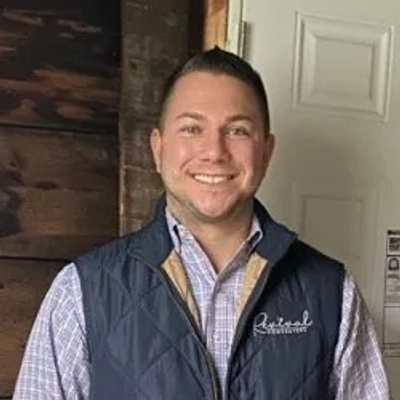
Thank-You Packages Generate 40% New Referrals
I convinced my executive team to invest in what I called 'Note Holder Care Packages'--we'd send handwritten thank-you notes with local gift cards to people who had sold us mortgage notes, along with referral cards they could share with friends. My team initially balked at the ongoing cost and questioned whether past clients would actually refer new business, but I argued that our industry runs on trust and word-of-mouth in tight-knit communities. Within six months, those care packages generated over 40% of our new leads through direct referrals, proving that a little gratitude goes much further than expensive advertising when you're dealing with people's most important financial decisions.
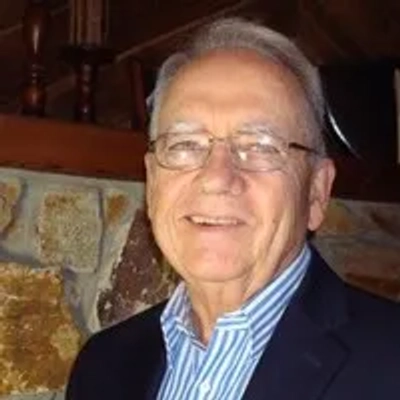
Cafe Office Hours Outsell Expensive Online Ads
I convinced my team to invest in what I called 'coffee shop office hours'--setting up at different local cafes twice a week where homeowners could just walk up and ask questions about selling, no pressure. My team thought it was too informal and worried about ROI, but I showed them how our competitors were all hiding behind websites and phone calls while people in coastal NC prefer face-to-face conversations. After three months, those casual coffee meetings generated more qualified leads per hour than our expensive online ads, and we closed deals with folks who said they never would've called our office but felt comfortable approaching us over a cup of coffee.

Physical Seller Guide Becomes Top Lead Generator
I pitched my team on creating a physical 'SC Mobile Home Seller's Guide'--a booklet explaining the unique process of de-titling and selling manufactured homes, which we distributed in community offices. My team was focused on digital ads and thought printing was a waste, but I knew from my agent days that many of these homeowners value tangible, straightforward advice they can hold. The guide quickly became our best lead source, with sellers calling us booklet-in-hand, already viewing us as the trusted expert before we even said hello.
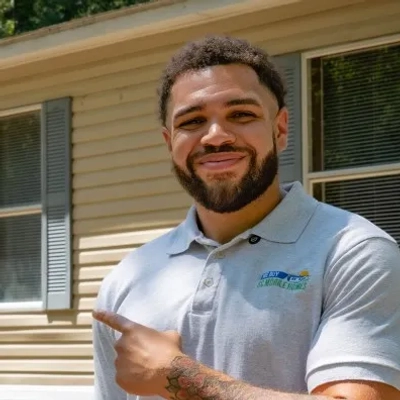
Phone Hotline Connects With Tech-Hesitant Homeowners
When I wanted to introduce a 'Sell Your House Stress-Free' hotline, my team was skeptical--it sounded too old-school. I laid out how many homeowners are overwhelmed by forms and tech, and offered to take calls myself as proof. After just one month, the hotline brought in genuine leads from folks who said our willingness to listen--at their pace, over the phone--was the difference that made them trust us, translating into several closed deals and a new staple in our approach.

Tax Relief Roadshow Secures 25% of Acquisitions
I once pitched the idea of launching a 'Property Tax Relief Roadshow' where we'd set up informational booths in neighborhoods with high delinquency rates--my team questioned whether homeowners would engage. To build my case, I highlighted how many families in our community feel isolated during financial stress and shared data showing that proactive outreach builds trust faster than reactive marketing. Within six months, those conversations led to 25% of our acquired properties that year, with sellers repeatedly telling us they chose us because we were the only ones who offered help before they had to ask.
Hardship Grants Demonstrate Authentic Company Mission
I pushed to launch a 'Hardship Grant' initiative where we'd offer small, no-strings-attached financial aid to homeowners facing immediate crises like job loss or medical emergencies. My team worried it could be perceived as insincere, but I shared stories of families we've helped and framed it as consistent with our mission--proving real compassion builds trust. Six months in, those grants led to seven homeowners choosing to sell exclusively to us, with referrals that tripled our regional reputation for authentic care.

Military-Focused Billboards Target PCS Move Timelines
I convinced my team to start buying small billboards in rural areas around military bases, specifically targeting PCS moves with messages like 'Moving Orders? We Buy Houses Fast.' Initially, they questioned spending on traditional advertising when everyone was going digital, but I used my military background to explain how service members think and plan differently--they need visible, trusted options during stressful transitions. Within four months, those billboards generated our highest-converting leads because military families appreciated working with a veteran who understood their unique timeline pressures, and our PCS-focused messaging became 30% of our business.
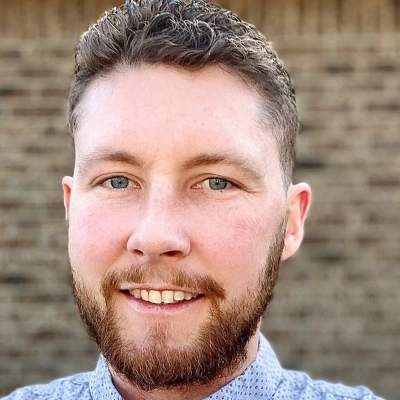
Raw Neighborhood Stories Boost Inbound Inquiries
I remember pitching a 'Neighborhood Storytelling' campaign where we filmed authentic homeowner testimonials in their communities instead of staged ads. My leadership team questioned the production value, so I leveraged my community development background to demonstrate how raw stories build emotional connections--citing a nonprofit campaign I led that doubled engagement. We launched in three pilot neighborhoods and saw a 35% uptick in inbound inquiries from those areas within two months.





